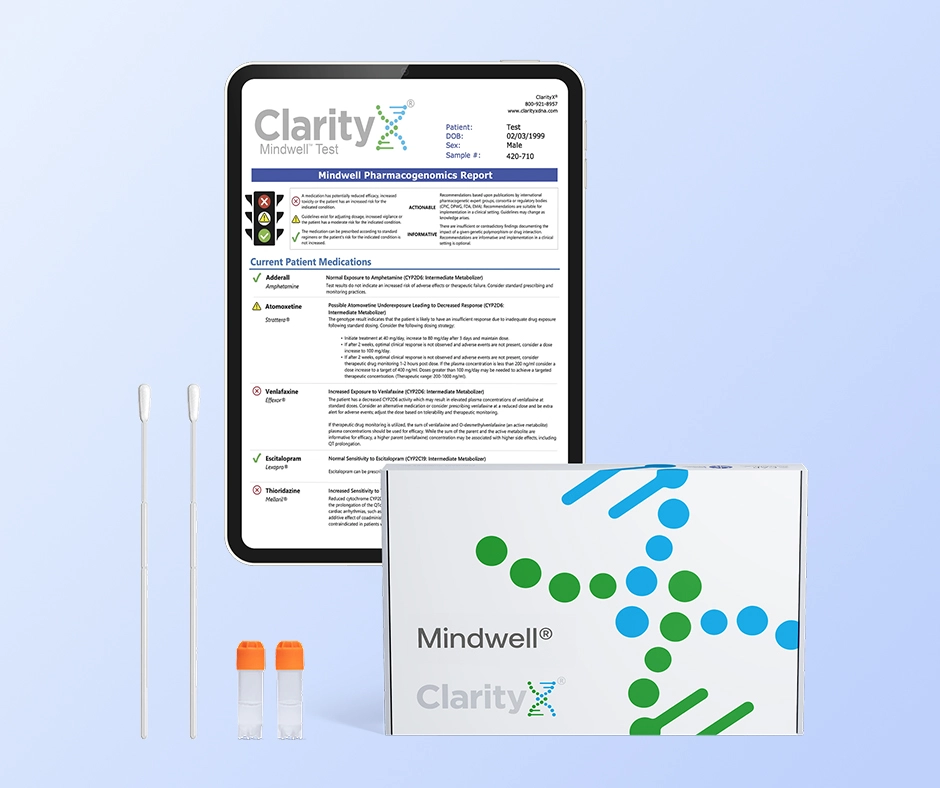Strattera® vs. Adderall®: What Are They?
Strattera and Adderall are medications that are prescribed for the treatment of ADHD or narcolepsy. These medications help to increase certain neurotransmitters in the body allowing for better management of the symptoms of ADHD. ADHD, or Attention Deficit Hyperactivity Disorder, is described in the DSM-5 diagnostic criteria as having multiple specific symptoms that have negatively impacted a person’s academic, social, and or occupational life. These symptoms may include the inability to pay attention, hyperactivity, impulsiveness, poor listening skills, losing or misplacing items needed to accomplish tasks, being sidetracked easily, and more. Narcolepsy is the inability to remain awake during normal waking hours.
What is Strattera?
Strattera, or atomoxetine, is a non-stimulant medication used for the treatment of both ADHD and narcolepsy. Strattera is a selective norepinephrine reuptake inhibitor. In our bodies, our neuron cells release neurochemicals to allow other neurons to react appropriately. When norepinephrine is released, we become more alert, maintain better attention, and concentrate better. This system is part of the fight-or-flight system allowing us to react to emergencies. Norepinephrine also helps our body to control heart rate, blood pressure, and focus. Norepinephrine helps us to provide glucose to our cells for increased energy demands as well. Strattera causes the norepinephrine that has been released to stay available longer. This then allows our bodies to build up increased amounts of norepinephrine leading to enhanced focus and improving the symptoms of ADHD.
What is Adderall?
Adderall, a stimulant medication, is made of dextroamphetamine and amphetamine salts. Adderall causes the neurons to release and then not reuptake dopamine and norepinephrine. The stimulant action leads to extra dopamine and norepinephrine being released into the body. In addition, these neurotransmitters then remain available longer due to the reuptake being blocked. Adderall leads to significantly more dopamine and norepinephrine in the body.
Stimulant medication is considered first-line therapy for ADHD. Stimulant medications, however, have a high potential for abuse and drug dependence. Abuse and dependence increase with increasing dosages and with prolonged use in some people. Due to the potential for abuse, Adderall is considered a controlled substance labeled as a Schedule II, or CII, drug by the DEA (Drug Enforcement agency). CII medications are defined as drugs with a high potential for abuse that could lead to severe psychosocial or physical dependence. These medications are considered dangerous by the DEA. Since Adderall is a CII medication, patients are not allowed to have more than what is minimally necessary to treat their symptoms. Doctors, pharmacists, and other medical professionals are required to follow very strict rules and guidelines to avoid patient harm and to follow the laws established by the DEA.
Can I Take Strattera and Adderall Together?
Strattera and Adderall work differently in the body but accomplish similar goals. They both increase norepinephrine availability. Increased norepinephrine leads to increased blood pressure, faster heart rates, and increased available glucose for energy. Taking these together is a duplication of treatment and would require even more careful monitoring if used. Using one medication over the other and then titrating that medicine to maximum benefit would be optimal.
Strattera Vs. Adderall: Dosage Amounts
Strattera is only supplied as a capsule that should not be broken apart or opened. The doses available are: 10 mg, 18 mg, 25 mg, 40 mg, 60 mg, 80 mg, and 100 mg. Strattera is rapidly absorbed with the peak concentration reached in 1-2 hours. Poor CYP2D6 metabolizers reach peak concentrations that are much higher than those who are normal metabolizers, leading to an increased risk of side effects or requiring a much smaller dose if practical. Your CYP2D6 metabolization is based on your genetics. If you are a poor metabolizer, then Strattera will be only half gone in 22 hours. If you metabolize quickly then half of the medicine will be gone in only 5 hours. Food does not affect the concentration of Strattera in adults but can lead to about a 9% reduction in concentration in children.
Adderall is available in extended release or immediate release. The extended release comes in: 5 mg, 10 mg, 15 mg, 20 mg, 25 mg, and 30 mg capsules. Peak concentration is reached in about 7 hours. These are intended for once-daily dosing. The immediate release comes in: 5 mg, 7.5 mg, 10 mg, 12.5 mg, 15 mg, 20 mg, and 30 mg tablets. Peak concentration in immediate release Adderall is reached in only about 3 hours and dosing is typically 2 - 3 times daily. CYP2D6 also affects Adderall. Poor metabolizers may end up with significantly more than needed concentrations with more side effects, and rapid metabolizers may not find that Adderall is as effective as expected. Dosage adjustments may alleviate some of the issues with differences in metabolism. Other medications may be better choices.
Strattera vs Adderall: Side Effects
Strattera
- anorexia (decreased appetite)
- changes in libido, impotence, priapism
- constipation
- dizziness
- Dry mouth
- fatigue
- irritability
- nausea/vomiting
- sleep disturbances
- urinary retention
Adderall
- anorexia (decreased appetite)
- blurred vision
- changes in libido, impotence, priapism
- dry mouth
- GI upset – taste, constipation
- insomnia
- overstimulation/restlessness/irritability/other psych potentials
- palpitations
- rash
- Raynaud’s phenomenon
- rhabdomyolysis
Who Should Not Take Strattera?
Strattera has a Black Box warning for increased suicidal ideation. Risk versus benefit should be regularly assessed. Closely monitor the patient at any time dosing is changed. This medication is not recommended for patients who have Major Depressive Disorder.
Avoid in patients who have:
- arrhythmias
- cardiomyopathy
- glaucoma
- history of adrenal gland tumors
- MAO inhibitor use within 14 days
- severe cardiovascular disease
- structural cardiac abnormalities
Use caution in patients who:
- are a suicide risk
- are at risk of bipolar
- are poor CYP2D6 metabolizers
- are pregnant
- are young (peds/adolescent) patients
- have depression
- have hepatic impairment
- have high or low blood pressures
- have Raynaud’s phenomenon
Who Should Not Take Adderall?
Adderall has a Black Box warning for increased risk of sudden death and serious cardiovascular adverse events and increased risk of mental health problems. Watch for new or worse behavior or thought problems, new or worse bipolar illness, new or worse aggressive behavior or hostility, and new psychotic or manic symptoms.
Avoid in patients with:
- a history of drug abuse
- advanced arteriosclerosis (hardening of the arteries)
- glaucoma
- hyperthyroidism
- MAO inhibitor use within 14 days
- moderate to severe hypertension
- symptomatic cardiovascular disease
Caution in patients who:
- are at risk of poor growth, monitor closely
- are nursing
- are poor CYP2D6 metabolizers
- have increased seizure risk
- have previous psych issues
Strattera vs Adderall: Which One Should I Take?
Choosing a medication can be difficult. Adderall is considered first-line therapy for ADHD. If for some reason you are not able to take a stimulant medication, Strattera may be the better option. If you can tolerate Adderall this medication is recommended. Both can be effective in treating ADHD symptoms and both should be started at low doses and increased slowly until the maximum benefit has been obtained. Speak with your doctor and pharmacist to ensure you are a good candidate for stimulant medication You may also want to obtain a pharmacogenetic test to see how your body will process the medicine.
Where Can I Get a Pharmacogenetics Test?
ClarityX provides pharmacogenetic testing. With a simple cheek swab, you can discover which medicine would most likely work best for your body. Each person is unique and medication therapy should be based on that uniqueness. The Mindwell PGx test provides information focusing on mental health medications including those that are commonly prescribed for ADHD. If you are considering medication therapy or are wondering if your current medications are the ones that work best for you then this test may help.
Citations:
atomoxetine Adult Dosing (epocrates.com)
Atomoxetine Monograph for Professionals - Drugs.com
021411s004s012s013s015s021lbl.pdf (fda.gov)
DSM-5 Diagnostic Criteria for ADHD (aafp.org)
Norepinephrine: What It Is, Function, Deficiency & Side Effects (clevelandclinic.org)
https://www.dea.gov/drug-information/drug-scheduling
Compare medications reported in ClarityX





